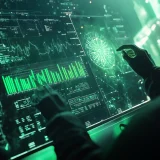10 technology laws that you will not find in any legal code
Technology rules our world. We may not have been aware of this until a few years ago, but we are becoming more and more aware of this.
The laws that we will discuss have not been written by human beings to regulate our coexistence. They are not laws of the physical world either. They are not given to us by Physics, and therefore are not fixed, and may even be inaccurate or imprecise. But they provide us with a sense of how technology evolves and how it influences our lives.
Let’s take a look at 10 technology laws that you won’t find in any legal code. Let’s go!
Moore’s Law: perhaps the most popular of them all, we have already written an article about it in this blog.
Moore’s Law, the work of Intel co-founder Gordon Moore, determines that the number of transistors contained in a microprocessor doubles every 2 years or so. This is a rather prosaic observation, but it has set the pace for the microprocessor industry to improve its products over decades, and it suggests a conclusion with much deeper implications: the improvement in technology comes at an exponential rate.
Kryder’s Law: heir to Moore’s Law, Kryder’s Law, written by engineer Mark Kryder, focuses on the capacity of hard disks. Thus, the capacity of these is only doubled every 12 months.
If Kryder’s Law were to continue to be enforced over the next few decades, some of the problems of “everyday” storage space, such as film storage, would go down in history. In fact, in just a couple of decades we would be able to store in a laptop all the knowledge that, today, human beings have at their disposal…
Kaku’s “caveman” law: it is very different from the previous ones, it appeals to our most primary instincts. Created by the famous physicist and scientist Michio Kaku, it establishes that when our primitive desires come into conflict with technology, it is the first ones who are the winners.
This is not a reflection of the value or strength of the technology, but of its ability to adapt to our desires. The more a technology evolves, the more natural and adapted to our instincts it becomes.
Wirth’s Law: It makes things a little more complicated. Stated by scientist Niklaus Wirth, he states that while the rate of progress of hardware is getting faster and faster (as predicted by Moore’s Law) the rate of progress of software is slowing down, which hinders the advancement of technology.
As a result, the increasingly large and complex programs are not progressing at such a fast pace. This is why there are easily visible developments, such as the fact that many of today’s programs work at a similar rate as that of similar programs a few years ago, even though they run on much faster machines.
Kranzberg Laws: These were written in the 1960s by the historian Melvin Kranzberg, and are six observations that focus mainly on the social impact of technology:
- Technology is neither good nor bad, nor is it neutral: it is a clear conclusion to put an end to any debate about the goodness or badness of technology. This depends on the context and the use of it. And besides, when used by humans, it will never be completely neutral either.
- The invention is the mother of need: this statement suggests that each new invention brings with it the need for the development of new technologies that complement or facilitate its use.
- Technology comes in large or small packages: there are different degrees of influence of technology. Sometimes they will completely transform society; sometimes they will bring about small changes.
- Technology depends on non-technical political decisions: with this statement, Kranzberg argues that technology does not follow its own or “natural” rhythm, but is guided and driven by political or cultural decisions that often have nothing to do with technical principles.
- The whole history is relevant, but the history of technology is the most important: no matter how relevant the events that move the future of human history, the most important of them are those that refer to the history of technology. History moves technology but, above all, it is technology that moves history.
- Technology is a human activity: by itself, technology lacks emotions or will. It depends entirely on the human being, and its use will be for human reasons.
As we said at the beginning of this article, we cannot consider these “technology laws” to be written by physics, but rather they are the result of observations that some relevant figures have made throughout history.
Like all laws created by human beings, they have an expiration date, they do not always have to be complied with, and you can even disagree with them.
In this regard, what do you think of these unwritten’ technology laws? We are very interested in your opinion, and it would be great if you could share it with us and with all the readers of this blog. You can also do this very easily by leaving a message in the comment section right at the end of this article.
But before you do that, why don’t you take a look at Pandora FMS? Pandora FMS is flexible monitoring software, which is capable of monitoring devices, infrastructures, applications, services and business processes.
Do you want to know more about what Pandora FMS can do for you? Click here: https://pandorafms.com
Or you can also send us any question you may have about Pandora FMS in an easy way thanks to the contact form that can be found at the following address:
https://pandorafms.com/company/contact/
Don’t forget to leave a comment below in the comments section, what do you think of these technology laws? We want to hear from you. And we will be happy to answer all your questions. See you soon! And don’t forget that…
You can also take a look at the other articles that are published on this blog! These may be interesting for you.
The Pandora FMS team will be happy to help you!
Pandora FMS’s editorial team is made up of a group of writers and IT professionals with one thing in common: their passion for computer system monitoring. Pandora FMS’s editorial team is made up of a group of writers and IT professionals with one thing in common: their passion for computer system monitoring.
















